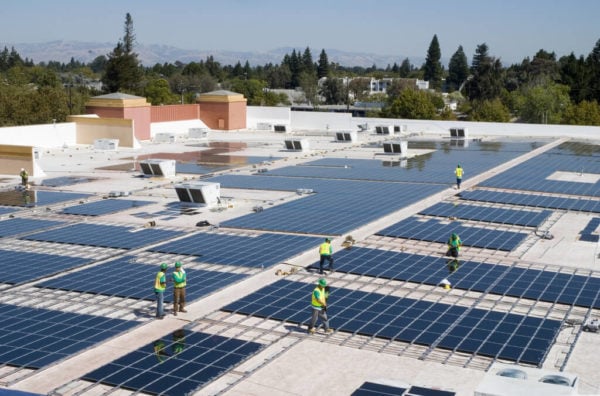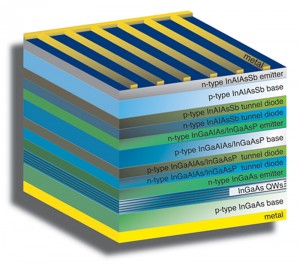The old beer-selling adage that good things come to those who wait also applies to those who've yet to sign away a
kidney for one of
EE's LTE plans.
ThreeUK is announcing that it's going to bundle LTE into its existing unlimited mobile data packages without any additional charges. The network is planning to launch its own 4G product later in the year, using spectrum it
snagged when T-Mobile and Orange were forced to sell off a chunk in order to see their
marriage go through. As such, existing ThreeUK customers who own an
LTE-ready device can expect to see their mobile internet shoot through the roof as soon as the capacity is
switched on.

Three to offer latest technology as standard with no price premium.
Three UK today made a public commitment to offer Ultrafast services as a standard feature on all its smartphone price plans. LTE, otherwise known as 4G, will be added to Three's Ultrafast network later this year. Unlike some other UK mobile operators, it will be available across all existing and new price plans without customers needing to pay a premium fee to 'upgrade'.
Three's Ultrafast network, currently supported by DC-HSDPA technology, already covers 55% of the UK population with an initial focus on 50 towns and cities. It will reach 80% population coverage by the end of March and in the second half of this year it will incorporate 1800Mhz spectrum already acquired by Three to add even more coverage and capacity.
Any customer with an Ultrafast ready device can already enjoy great speeds on Three's Ultrafast network without paying a premium or needing to swap SIM cards or price plans. LTE will be available as standard with all customers' price plans when the roll-out begins later this year.
"Our customers choose Three because they love the internet and know they can get great speeds and great value on our award-winning network," said Three UK chief executive Dave Dyson.
"As we add the next wave of technology to our Ultrafast network, we've listened to our customers and thought long and hard about the right way to do it. We don't want to limit Ultrafast services to a select few based on a premium price and we've decided our customers will get this service as standard. With Three, it's simple, great value and Ultrafast. What you might expect from the network that was built for the internet."
Customers with Ultrafast ready devices, including the Apple iPhone 5, Nokia Lumia 920, Sony Xperia Z, Apple iPad mini and Apple iPad with Retina display, can already enjoy Three's Ultrafast network and will also be able to use the 1800Mhz spectrum when it is added later this year. Device choice is growing rapidly with new Ultrafast ready LTE versions of the Samsung Galaxy S III and Galaxy Note II being launched on Three within the next month, and the BlackBerry Z10 launching mid-February.
 Are you and your girlfriend or boyfriend known as the ‘geeky’ couple? Are you also having a hard time picking out aValentine’s Day gift for that special someone? Well, worry no more as I will list presents for the geekiest of technology couples.
Are you and your girlfriend or boyfriend known as the ‘geeky’ couple? Are you also having a hard time picking out aValentine’s Day gift for that special someone? Well, worry no more as I will list presents for the geekiest of technology couples. Roses are arguably the most romantic flowers, but giving them every year seems a bit boring. This year, give your lover this pixel rose that looks like it has been taken out of a classic Super Mario game.
Roses are arguably the most romantic flowers, but giving them every year seems a bit boring. This year, give your lover this pixel rose that looks like it has been taken out of a classic Super Mario game. Instead of treating your date to a dinner, buy some of these instead. No one can resist having at least one of these sushi shaped USB drives in their bag at such a cheap price.
Instead of treating your date to a dinner, buy some of these instead. No one can resist having at least one of these sushi shaped USB drives in their bag at such a cheap price. This old classic game has now been turned into a multicolored lamp. With removable parts, you can stack this lamp any way you want!
This old classic game has now been turned into a multicolored lamp. With removable parts, you can stack this lamp any way you want! Paper-size your miniature golf experience with this book full of miniature golf! Each page includes a small, dented field carving for a tiny golfing experience!
Paper-size your miniature golf experience with this book full of miniature golf! Each page includes a small, dented field carving for a tiny golfing experience! Cue the ‘Mission Impossible‘ music. This tiny camera, disguised as a car remote key, will let you live your dream of being a spy. Well, you’ll at least feel like it.
Cue the ‘Mission Impossible‘ music. This tiny camera, disguised as a car remote key, will let you live your dream of being a spy. Well, you’ll at least feel like it.






